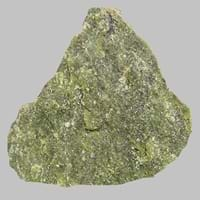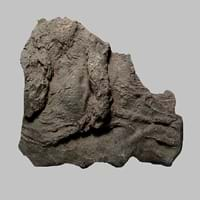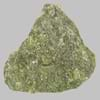Definition
Rhyodacite is an extrusive volcanic rock intermediate in composition between dacite and rhyolite
During the impact melted material forming a breccia containing glass and crystal or lithic fragments together form Suevite rock.
Origin
USA
Canada, Germany
Discoverer
Unknown
Unknown
Etymology
Rhyo lite + dacite : a rock intermediate between rhyolite and dacite that is the extrusive equivalent of granodiorite
No etymologies found
Class
Igneous Rocks
Metamorphic Rocks
Sub-Class
Durable Rock, Medium Hardness Rock
Durable Rock, Medium Hardness Rock
Group
Volcanic
Not Applicable
Other Categories
Fine Grained Rock, Opaque Rock
Coarse Grained Rock, Opaque Rock
Color
Black to Grey, Dark Greenish - Grey
Black, Brown, Colourless, Green, Grey, Pink
Durability
Durable
Durable
Scratch Resistant
Yes
Yes
Appearance
Skeletal
Banded
Interior Uses
Decorative Aggregates, Interior Decoration
Decorative Aggregates, Homes, Interior Decoration
Exterior Uses
As Building Stone, Garden Decoration
As Building Stone, As Facing Stone, Garden Decoration, Office Buildings
Other Architectural Uses
Curbing
Curbing
Construction Industry
As Dimension Stone, Construction Aggregate, for Road Aggregate, Landscaping
As Dimension Stone, Cement Manufacture, for Road Aggregate, Making natural cement, Manufacture of Magnesium and Dolomite Refractories
Medical Industry
Not Yet Used
Not Applicable
Antiquity Uses
Artifacts
Artifacts, Monuments, Sculpture
Commercial Uses
Cemetery Markers, Creating Artwork
As a Feed Additive for Livestock, Gemstone, Metallurgical Flux, Source of Magnesia (MgO)
Types
Not Available
Phyllosilicates, Calcite
Features
Available in Lots of Colors and Patterns
Host Rock for Lead
Archaeological Significance
Monuments
Not Yet Used
Used
Famous Monuments
Not Applicable
Data Not Available
Sculpture
Not Yet Used
Used
Famous Sculptures
Not Applicable
Data Not Available
Figurines
Not Yet Used
Used
Formation
Rhyodacite is a fine-grained, hard rock which is a type of metasomatite, essentially altered basalt. It forms with or without crystallization, either below the surface as intrusive rocks or on the surface as extrusive rocks.
Suevite is a metamorphic rock consisting partly of melted material, typically forming a breccia containing glass and crystal or lithic fragments, formed during an impact event.
Mineral Content
Amphibole, Apatite, Biotite, Feldspar, Garnet, Hornblade, Magnetite, Plagioclase, Pyroxene, Quartz, Zircon
Coesite, Quartz, Stishovite
Compound Content
Ca, Fe, Potassium Oxide, NA, Potassium, Silicon Dioxide
CaO, Carbon Dioxide, MgO
Types of Metamorphism
Burial Metamorphism, Cataclastic Metamorphism, Contact Metamorphism, Hydrothermal Metamorphism, Impact Metamorphism, Regional Metamorphism
Burial Metamorphism, Cataclastic Metamorphism, Contact Metamorphism, Hydrothermal Metamorphism, Impact Metamorphism, Regional Metamorphism
Types of Weathering
Biological Weathering, Chemical Weathering, Mechanical Weathering
Not Applicable
Types of Erosion
Chemical Erosion, Coastal Erosion, Glacier Erosion
Not Applicable
Grain Size
Fine Grained
Coarse Grained
Fracture
Conchoidal
Uneven
Streak
Black
Light to dark brown
Porosity
Less Porous
Less Porous
Luster
Greasy to Dull
Earthy
Compressive Strength
Not Available
Cleavage
Not Available
Irregular
Toughness
2.1
Not Available
Specific Gravity
2.34-2.40
2.86
Transparency
Opaque
Opaque
Density
Not Available
2.8-2.9 g/cm3
Resistance
Heat Resistant
Heat Resistant
Deposits in Eastern Continents
Asia
China, India, Iran, Saudi Arabia, Sri Lanka, Taiwan, Thailand, Turkey, Vietnam
Not Yet Found
Africa
Angola, Egypt, Madagascar, Namibia, Nigeria, South Africa
Not Yet Found
Europe
Austria, Belgium, Finland, France, Germany, Italy, Norway, Sardinia, Spain, Switzerland
England, France, Germany, Great Britain, Netherlands, Sweden, Switzerland, United Kingdom
Others
Not Yet Found
Not Yet Found
Deposits in Western Continents
North America
Canada, USA
Not Yet Found
South America
Not Yet Found
Not Yet Found
Deposits in Oceania Continent
Australia
Not Yet Found
Not Yet Found
Rhyodacite vs Suevite Characteristics
Though some rocks look identical, they have certain characteristics which distinguish them from others. Characteristics of rocks include texture, appearance, color, fracture, streak, hardness etc. Rhyodacite vs Suevite characteristics assist us to distinguish and recognize rocks. Also you can check about Properties of Rhyodacite and Properties of Suevite. Learn more about Rhyodacite vs Suevite in the next section. The interior uses of Rhyodacite include Decorative aggregates and Interior decoration whereas the interior uses of Suevite include Decorative aggregates, Homes and Interior decoration. Due to some exceptional properties of Rhyodacite and Suevite, they have various applications in construction industry. The uses of Rhyodacite in construction industry include As dimension stone, Construction aggregate, For road aggregate, Landscaping and that of Suevite include As dimension stone, Cement manufacture, For road aggregate, Making natural cement, Manufacture of magnesium and dolomite refractories.
More about Rhyodacite and Suevite
Here you can know more about Rhyodacite and Suevite. The life cycle of a rock consists of formation of rock, composition of rock and transformation of rock. The composition of Rhyodacite and Suevite consists of mineral content and compound content. The mineral content of Rhyodacite includes Amphibole, Apatite, Biotite, Feldspar, Garnet, Hornblade, Magnetite, Plagioclase, Pyroxene, Quartz, Zircon and mineral content of Suevite includes Coesite, Quartz, Stishovite. You can also check out the list of all Igneous Rocks. When we have to compare Rhyodacite vs Suevite, the texture, color and appearance plays an important role in determining the type of rock. Rhyodacite is available in black to grey, dark greenish - grey colors whereas, Suevite is available in black, brown, colourless, green, grey, pink colors. Appearance of Rhyodacite is Skeletal and that of Suevite is Banded. Properties of rock is another aspect for Rhyodacite vs Suevite. The hardness of Rhyodacite is 5.5-6 and that of Suevite is 5.5. The types of Rhyodacite are Not Available whereas types of Suevite are Phyllosilicates, Calcite. Streak of rock is the color of powder produced when it is dragged across an unweathered surface. The streak of Rhyodacite is black while that of Suevite is light to dark brown. The specific heat capacity of Rhyodacite is 1.12 kJ/Kg K and that of Suevite is 0.92 kJ/Kg K. Depending on the properties like hardness, toughness, specific heat capacity, porosity etc., rocks are resistant to heat, wear, impact, etc.Rhyodacite is heat resistant whereas Suevite is heat resistant.





